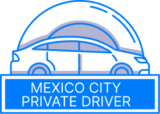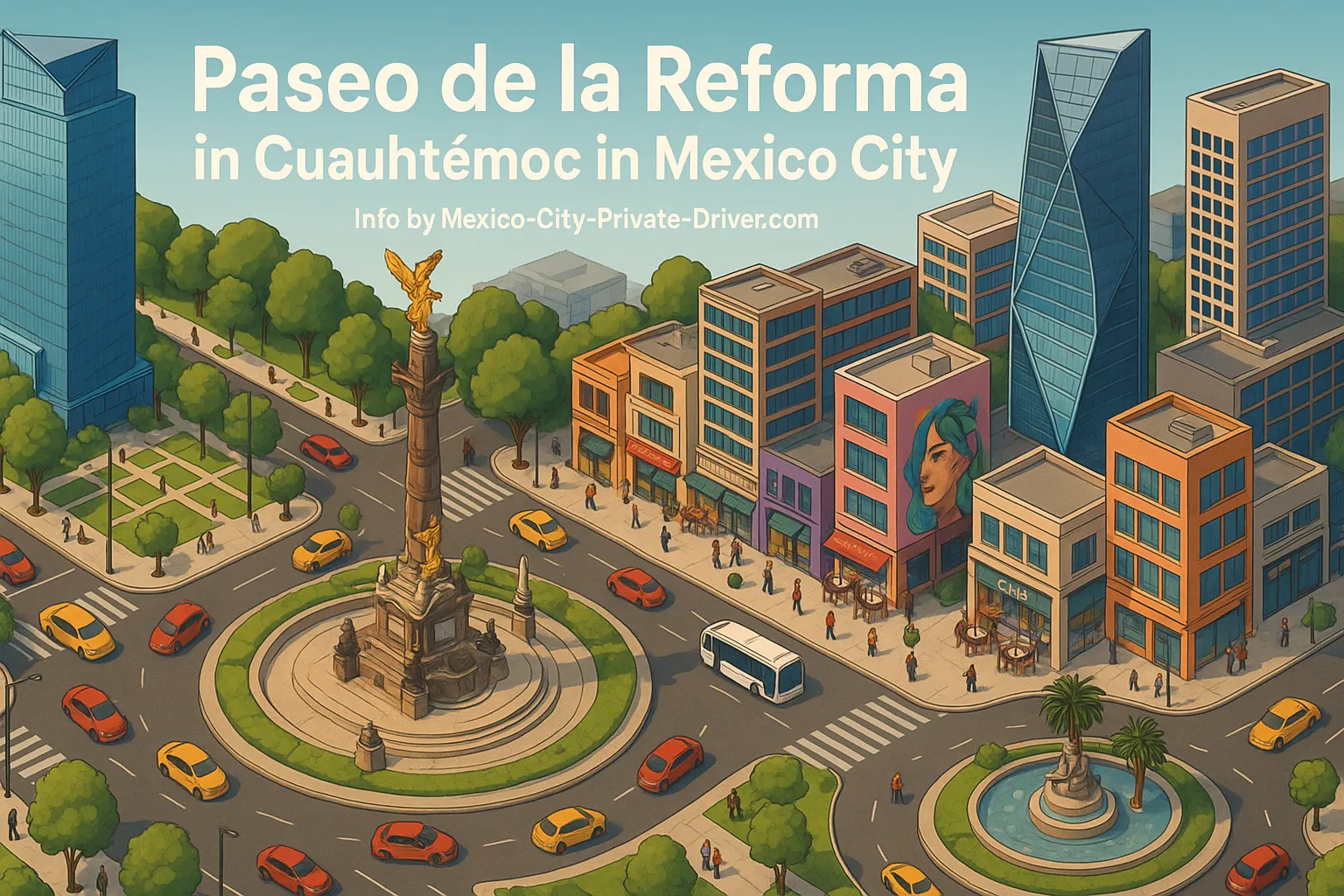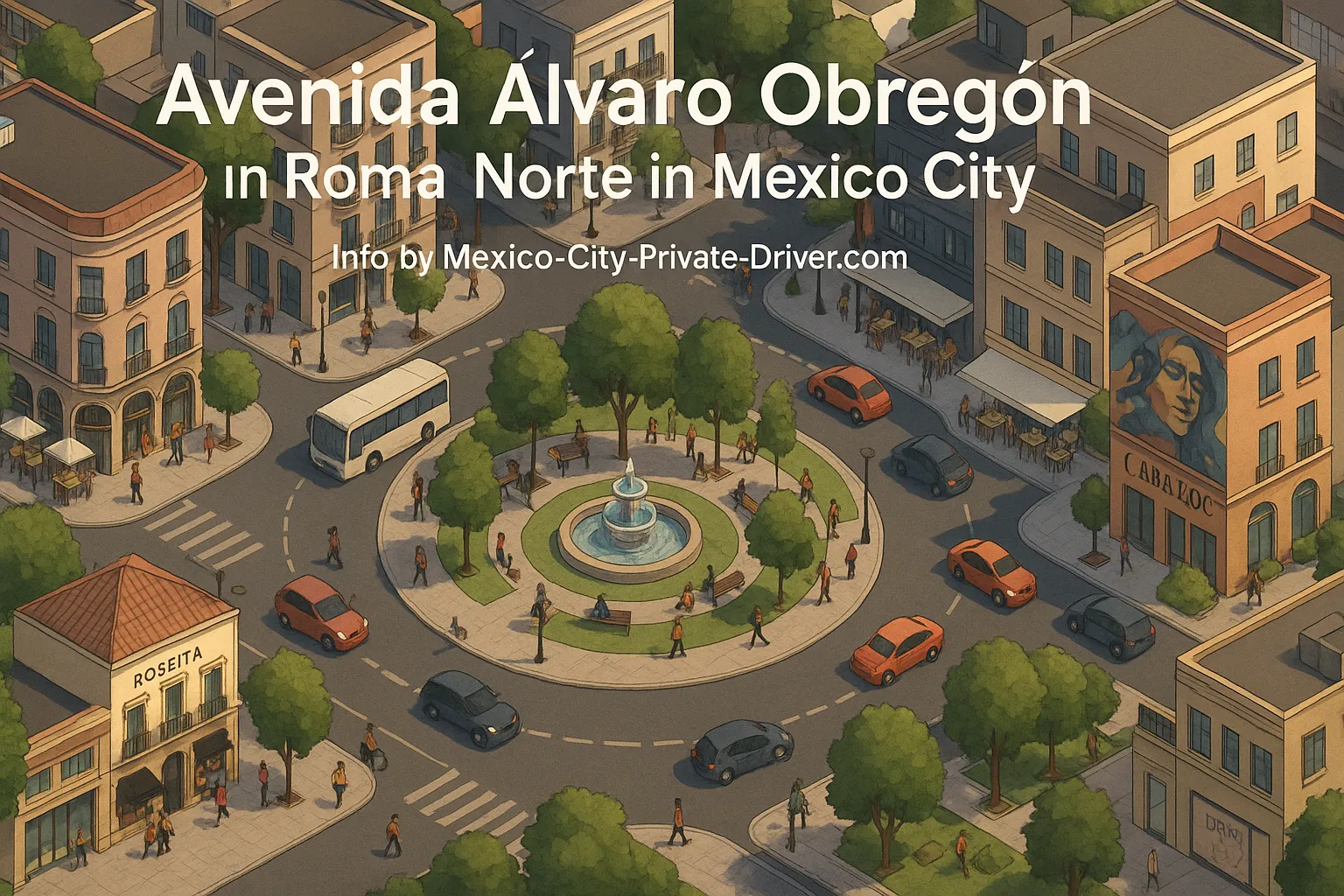Why Avenida Río Churubusco is one of my favorite working corridors in Mexico City
As the owner and lead driver at Mexico-City-Private-Driver.com, I spend thousands of kilometers on the citys arteries every year. If there is one boulevard I know intimately, it’s Avenida Río Churubusco — or as many clients call it, Av. Río Churubusco, Río Churubusco Avenue, or simply Río Churubusco. The avenue cuts across the southern side of the city and threads together a surprising mix of history, industry, concert venues, film studios, and everyday life. For travelers looking to hire a private driver in Mexico City, Río Churubusco is often part of the itinerary — whether moving between hotels in Condesa and a concert at Foro Sol, dropping off at the Museo Nacional de las Intervenciones, or navigating rush-hour runs to the airport.
Quick snapshot: the essentials I always tell new clients
- Location and reach: Avenida Río Churubusco runs east–west across the southern corridor of Mexico City, passing through or alongside boroughs such as Benito Juárez, Coyoacán and Iztacalco and linking with major connectors used by local drivers.
- Major landmarks nearby: Churubusco film studios (Estudios Churubusco), Museo Nacional de las Intervenciones (former Convent of Churubusco), the Autódromo Hermanos Rodríguez and Foro Sol concert complex, and easy access to Coyoacán and the historic center.
- Public transport access I use often: Metro Line 8’s Río Churubusco station and several bus corridors — convenient for mixed transport plans (driver + metro/taxi transfers).
- Traffic and driving: Expect heavy traffic peaks (weekday mornings 7–9am; evenings 6–9pm). Concerts and race events at Foro Sol make the avenue particularly congested — plan an extra 45–90 minutes on those nights.
How I use Avenida Río Churubusco in client itineraries
When I plan pickups or full-day tours I treat Río Churubusco like a spine: it connects south-of-center neighborhoods with eastern venues and event spaces. Here are three typical ways I route clients that include the avenue.
1. Airport runs (AICM) from Condesa/Roma/Polanco
If youre staying in Condesa or Roma and have an evening flight, I’ll often take Avenida Río Churubusco eastward, depending on traffic, to link with Circuito Interior or Calzada Ignacio Zaragoza toward the airport. Why? Because, during certain hours, that route avoids the slowest parts of Insurgentes and downtown bottlenecks. It’s not always faster — on concert nights or when theres a race at the Autódromo, plans change — and that’s why a local driver who reads traffic in real time matters.
2. Museum + Coyoacán half-day
A morning that pairs the Museo Nacional de las Intervenciones (the old convent where the Battle of Churubusco left its mark) with Frida Kahlo’s Casa Azul is one of my favorite packages. I’ll pick you up in the boroughs of Condesa or Polanco, take Río Churubusco east or west depending on where you start, and weave through quieter streets so you get more time inside each site and less time idling in traffic.
3. Concert or Grand Prix logistics — smooth arrival and escape
For events at Foro Sol or the Autódromo Hermanos Rodríguez I coordinate windowed pickups (arrive 1–1.5 hours before showtime) and staggered drop-offs after. The avenue is the natural channel in and out, but it becomes a sea of taxis, Uber drivers, and private cars. My crew uses staged pull-ins, pre-paid parking, and the best licensed exits to avoid the chaotic crush on Río Churubusco itself.
Traffic, lanes and driving details — what I want clients to know
Driving Río Churubusco is a blend of freeway rhythm and urban negotiation. Here are the operational details I live by and share with clients.
- Multiple lanes and heavy vehicles: The avenue typically has several lanes each direction and carries heavy truck traffic. Expect freight and service vehicles, especially mid-day.
- Rush hours: Mornings 7:00–9:30 and afternoons 17:30–20:30. Friday nights are unpredictable because people head east to concert venues; Sunday afternoons can be surprisingly busy with weekend markets and events.
- Event surges: Autódromo Hermanos Rodríguez and Foro Sol events can shut down nearby feeder streets or create temporary one-way flows. I always check event schedules and coordinate alternate staging points.
- Traffic enforcement and fines: Police and traffic authority checkpoints (CDMX Secretaría de Seguridad and Secretaría de Movilidad) are frequent near busy intersections — document-ready drivers make transitions faster. If you’re renting a car, inform me so I can advise on necessary paperwork.
Parking and pickups — insider options I use as a private driver
Street parking along Río Churubusco is limited and not the safest option for luggage or overnight stays. As a private driver I prefer predetermined, secure pickup or drop-off points:
- Hotel valets: If your hotel has a valet (in Condesa, Polanco, Reforma hotels) I’ll use that. It’s faster and reduces risk to luggage and passenger comfort.
- Designated lots: Near major venues there are paid lots and private garages that I have established rates with. I pre-book for concerts or Formula 1-style events.
- Side-street staging: I know quiet side streets one or two blocks off Río Churubusco where I can safely stage a vehicle while avoiding active bus lanes and police checkpoints. This is especially helpful for short pickups when passengers prefer not to walk into a main intersection.
Public transportation connections I pair with a private car
Part of my job is knowing when it’s better to mix modes. Avenida Río Churubusco has useful metro and bus access that can complement private driving:
- Metro Line 8 (Río Churubusco station): Useful when paired with a short drive — for example, I’ll drop clients near the station if they want to go quickly to Centro Histórico while I park or reposition.
- RTP and microbus corridors: These run along and across Río Churubusco and carry locals everywhere — if you enjoy people-watching and local flavor, I’ll show you how to combine a short hop on a local bus with a comfortable car transfer.
- Ride-hailing integration: For complex group logistics, I sometimes coordinate a car for the elderly or luggage and let other members use Metro Line 8 to shorten dwell times in congested areas.
Local tips only a private driver would tell you
As a full-time Mexico City driver, I’ve developed a handful of tips that save time and make trips more relaxed. I only reveal them to clients who want the best experience:
- Avoid the obvious drop-offs: On concert nights, don’t be the person who asks to be dropped directly in front of the venue. I’ll use nearby official lots or side streets that reduce the time you spend in a traffic jam and get you to the entrance faster.
- Stagger pickups: If your party is large, we plan staggered times. I’ll pick up the first wave and return to a safe staging zone — quicker than waiting for everyone to emerge into a sea of cars on Río Churubusco.
- Cash for parking: Some private lots still prefer cash. I keep ones I trust in rotation and advise you in advance to carry small bills.
- Use landmarks, not addresses: Many buildings don’t display numbers prominently. Ask me to set the pickup at a landmark (for example, “by the Museo Nacional de las Intervenciones arch” or “near the Autódromo pedestrian bridge”) and you’ll avoid confusion.
- Late-night etiquette: If you’re staying out late, plan to meet inside the venue or a nearby 24-hour café. Some stretches of Río Churubusco are quieter and not ideal for collecting people at 1–2 AM, especially with luggage.
Safety and regulations — what I keep in mind for every ride
I follow Mexico City rules and extra security practices that protect clients and the vehicle:
- Seat belts: I insist everyone uses seat belts. It’s a city rule and a basic safety measure.
- Emission programs: Be aware of “Hoy No Circula” and other emissions restrictions that can impact rental cars or older vehicles — if youre renting, check your plate’s restrictions for the day you plan to travel.
- Document readiness: I confirm registration, insurance and driver ID before every long trip — it speeds interactions with authorities if a checkpoint appears on Río Churubusco.
- Secure luggage handling: Never leave luggage visible and unattended. I place suitcases in the trunk or in a lockable compartment for peace of mind.
Nearby neighborhoods and how I connect them to Río Churubusco
Avenida Río Churubusco is more than pavement — it’s the bridge between some of Mexico City’s most visited neighborhoods. Here’s how I typically link them for visitors:
Condesa / Roma to Río Churubusco
These neighborhoods are west of Río Churubusco. I often pick clients up in Parque España or near Avenida Álvaro Obregón, then head south via Viaducto/Miguel Alemán or other connectors. The ride usually takes 15–30 minutes depending on traffic and the exact start point.
Polanco and Reforma connections
Polanco is north of the avenue and is a common origin for clients flying out or heading east. I have set routes that avoid downtown gridlock by using Circuito Interior or a combination of Avenida de los Insurgentes and Río Churubusco when needed.
Coyoacán and southern cultural circuit
Coyoacán’s cobblestone lanes contrast with Río Churubusco’s bustle. For museum days I’ll park strategically so you enjoy the charm of Coyoacán’s plazas and also have quick access to the avenue for later legs of your journey.
Attractions and custom routes I recommend that include Av. Río Churubusco
As a private driver I create balanced days so you see the highlights without feeling rushed. Below are three custom routes I run often. Each uses Río Churubusco strategically so you get more time inside attractions and less time idling in traffic.
Route A — Historic + cultural deep dive (half day)
- Pickup in Condesa or Roma
- Short drive to Museo Nacional de las Intervenciones (Battle of Churubusco site)
- Stroll and coffee in Coyoacán plaza
- Frida Kahlo Museum (pre-booked timed entry)
- Return via Río Churubusco so you can see the film-studio façades and the city’s industrial pulse
Route B — Event logistics (concert / motorsport)
- Pickup near your hotel 90–60 minutes before event
- Direct arrival to a pre-booked lot near Foro Sol or Autódromo Hermanos Rodríguez
- Post-event: I stage at a secure spot I know (not on Río Churubusco) to avoid the deadlock
- Optional late-night stop for snacks in a safe 24-hour area before returning to the hotel
Route C — Business traveler express (full day)
- Pick up at Mexico City business district (Polanco or Reforma)
- City-to-city meetings across Coyoacán/Iztacalco — timed to avoid rush hours
- Flexible finish: drop at AICM or back to the hotel using Río Churubusco or alternative depending on traffic
The “wow” story — Churubusco’s layers of history and cinema
One of the things that still gives me goosebumps is how layered this stretch of the city is. A few years ago I drove a small family — three generations — who insisted they wanted to see the exact spot where an ancestor had fought during the Battle of Churubusco in 1847. We parked near the old convent (today the Museo Nacional de las Intervenciones) and walked among the thick stone walls that still hold the scars of history. To be there in the sunlight with a grandmother pointing to a plaque, telling her grandchildren the story in halting English and animated Spanish — that is the kind of moment no tourist brochure captures.
On the very same week, I had a different job: transporting a small international film crew to Estudios Churubusco for a night shoot. The studios — the real heart of Mexico’s cinematic Golden Age — are a short drive from the same vintaged convent. Walking both areas back-to-back felt like traveling through time: cannonball marks and patriotic murals by day; at night, soundstages buzzing with generators, reflectors, and talented local technicians prepping a modern film set.
That duality — battle-scarred convent and bustling movie lot — is what makes Avenida Río Churubusco so captivating. It explains how, in a single afternoon, I can chauffeur someone learning family history to tears and later drive a director and gaffer to a location shoot where a new story will be made. That’s the wow for me: living history and living culture collide in the same strip of asphalt.
Hotels and pickup references — where I meet clients
I often pick up guests from popular lodging choices and I tailor the first impression accordingly:
Martin Weidemann is a digital transformation expert and entrepreneur with over 20 years of experience leading fintech and innovation projects. As a LinkedIn Top Voice in Digital Transformation and contributor to outlets like Forbes, he now brings that same expertise to travel and mobility in Mexico City through Mexico-City-Private-Driver.com. His focus: trustworthy service, local insights, and peace of mind for travelers.


